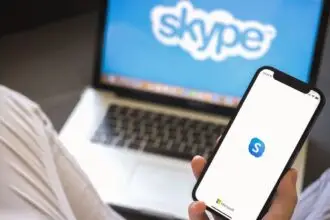Skype, the pioneering video and voice calling service that revolutionized digital communication in the mid-2000s, is officially shutting down. Microsoft, which acquired Skype in 2011, has announced that the platform will “no longer be available” starting in May. The tech giant is directing users to Microsoft Teams’ free tier, which will allow them to log in using their existing Skype credentials.
The Rise and Fall of Skype
Launched in 2003 in Estonia, Skype quickly became a household name by offering free calls worldwide. This was a game-changer at a time when international calling fees were sky-high. Its popularity skyrocketed, leading eBay to acquire Skype in 2005 for ZAR 50 billion. However, the partnership was short-lived—eBay sold 65% of its stake in 2009 for ZAR 36.5 billion, before Microsoft swooped in two years later with an ZAR 163 billion cash buyout.
Back in the day, Skype was the go-to platform for voice and video calls, particularly for long-distance relationships, remote workers, and businesses. It even became a verb—people didn’t “video call,” they “Skyped.” But despite its dominance, the service struggled to maintain relevance in an increasingly competitive market.
Why is Skype Shutting Down?
The writing has been on the wall for some time. Even with a brief pandemic-era resurgence, Skype has faced mounting competition from services like Zoom, Google Meet, Cisco Webex, Apple’s FaceTime, and Meta’s WhatsApp. Microsoft, on the other hand, has been pouring resources into Teams, which offers similar features but with deeper integration into the company’s broader ecosystem.
Jeff Teper, president of Microsoft 365 collaborative apps and platforms, acknowledged Skype’s impact in a blog post:
“Skype has been an integral part of shaping modern communications and supporting countless meaningful moments, and we are honored to have been part of the journey. We’re excited about the new opportunities that Teams brings and are committed to helping you stay connected in new and meaningful ways.”
The Shift to Microsoft Teams
While Skype was originally designed for casual conversations and personal calls, Microsoft Teams has been developed with business collaboration in mind. With features like video conferencing, file sharing, and team-based chatrooms, it has become a key tool in remote and hybrid work environments. Microsoft is now positioning Teams as the future of online communication, offering a free tier to accommodate former Skype users.
End of an Era
Skype’s demise marks the end of an era in internet communication. For many, it was the first introduction to video calling, connecting families, friends, and businesses worldwide. While its technology may live on in Teams, its name will soon fade into digital history.
So, if you’re still using Skype, it’s time to bid farewell and start exploring alternatives—before Microsoft pulls the plug in May.







